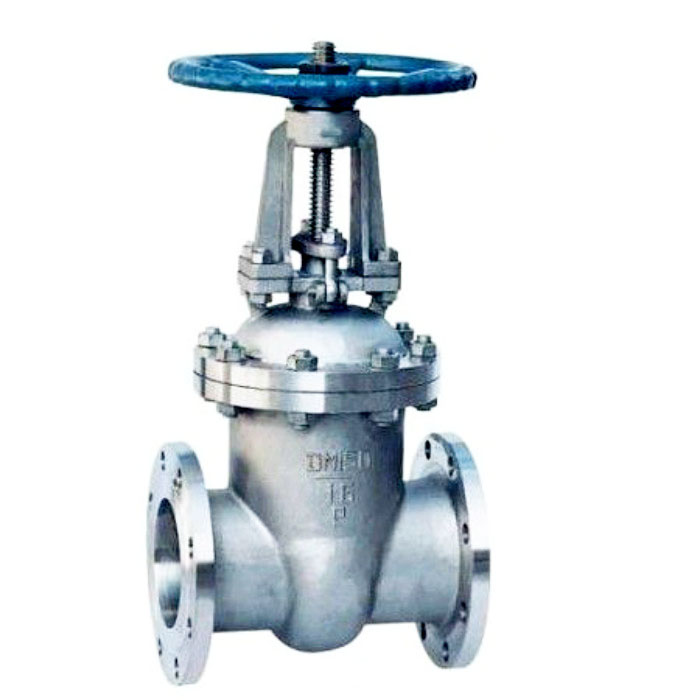Rising stem gate valve Packing Types and Features

The rising stem gate valve is composed of valve body and internal parts. The internal parts of the valve includes the valve trim, the valve stem, the stuffing box and the valve bonnet, etc., wherein the stuffing box component is used for sealing the valve stem, for which the elastic method is used to prevent the process medium from leaking on the surface of the valve stem by reciprocating or rotating motion. It is an integral part of the valve body. The valve stem seal of the valve is almost always realized by the stuffing box.
The rising stem gate valve packing is a filling material for the dynamic seal, which is generally installed in the stuffing box of the upper bonnet, and its function is to prevent the leakage of the controlled medium due to the movement of the valve stem.
Commonly used packings are mainly divided into two categories according to materials: Polytetrafluoroethylene and flexible graphite.
1. Polytetrafluoroethylene (PTFE)
Polytetrafluoroethylene (PTFE) is a polymer compound obtained by polymerizing tetrafluoroethylene. It has excellent chemical stability, corrosion resistance, sealing properties, high lubrication and non-stick properties, electrical insulation and good anti-aging ability. Its corrosion resistance even exceeds that of glass and ceramics. It has excellent corrosion resistance even for strong acids, alkalis and strong oxidants. It is an ideal sealing material. However, its temperature resistance is poor. Polytetrafluoroethylene starts to crack a very small amount above 200 °, and it is subjected to compression, heat and creep, which affects the sealing performance and is not suitable for molten alkali or fluoride.
Commonly used PTFE packings are:
(1) Polytetrafluoroethylene molded woven packing: It is made of polytetrafluoroethylene bulk woven and pressed. It is an opening material with good flexibility, long-lasting durability, good sealing effect and convenient replacement. It is the most widely used. A material.
(2) V-type PTFE packing: generally made of PTFE bar material turning, the packing structure is V-shaped, under the condition of compaction at both ends, due to the small friction coefficient of PTFE, there is lubrication Function, good sealing performance and so on. The characteristics of the V-shaped packing ring are: under the pressure of the medium in the valve, the lip of the outer ring of the packing is always close to the inner wall of the stuffing box when it is opened, so as to achieve a static seal. Under the action of pressure, when the lip of the inner ring of the packing is opened, it always adheres to the valve stem to ensure the dynamic seal, so that even if the valve stem moves up and down, the sealing performance can be ensured.
(3) PTFE-graphite packing: By adding part of glass fiber, graphite and molybdenum disulfide, the creep resistance and thermal conductivity of polytetrafluoroethylene are improved, but the hardness is increased, the corrosion resistance is decreased, and the sealing performance is lowered.
2. Flexible graphite
Flexible graphite materials are non-cellulosic materials that remove impurities from natural flake graphite. After being treated with strong oxidizing mixed acid, it becomes graphite oxide. The graphite oxide is liberated by heat, and the volume expands sharply, becoming a loose graphite with soft texture and toughness. It is a material with long life and good sealing performance.
2.1 Features
(1) Excellent heat resistance and cold resistance. Flexible graphite has almost no change in physical properties from ultra-low temperature of -250 ° C to high temperature of +600 ° C;
(2) Excellent chemical resistance. Flexible graphite has almost no corrosion in other acids, bases and solvents except for corrosion in strong oxidizing medium such as nitric acid and concentrated sulfuric acid;
(3) It has good self-lubricating properties. Like natural graphite, flexible graphite is easy to produce sliding when subjected to external force, so it has self-lubricating properties and good sealing performance;
(4) Because its porosity is curled due to its porous porosity, it has good resilience and flexibility. When the shaft or bushing has a radial circular runout due to eccentricity in manufacturing, installation, etc., it has sufficient floating performance, and even if the graphite is cracked, it can be well adhered, thereby ensuring tightness and preventing leakage.
2.2 Types of graphite packing
(1) Filament or braid: This packing is more elastic and can enclose the valve stem and purify the stem surface. The woven graphite packing can overcome the leakage of other types of graphite packings due to wear, but the woven graphite packing is easy to penetrate due to the filament structure leading to voids.
(2) flake graphite: a packing ring pressed by several graphite plates, whose texture is perpendicular to the surface of the valve stem, forming a square cross section, so the fluid is not easy to penetrate, but it also reduces axial pressure and radial pressure. The ratio needs to be sealed with a larger pressing force.
(3) Curved graphite: its texture is parallel to the axial direction of the valve stem and is processed by several graphite sheets. The bent flake graphite has a much higher pressure during pressing than it does when it is in operation, so it does not shrink again in the stuffing box. At high temperatures, it is known that it is easy to penetrate. However, due to the ease of processing and low price, it is currently widely used.
If you are interested in more information, feel free to contact us via sales@jhflow.com.